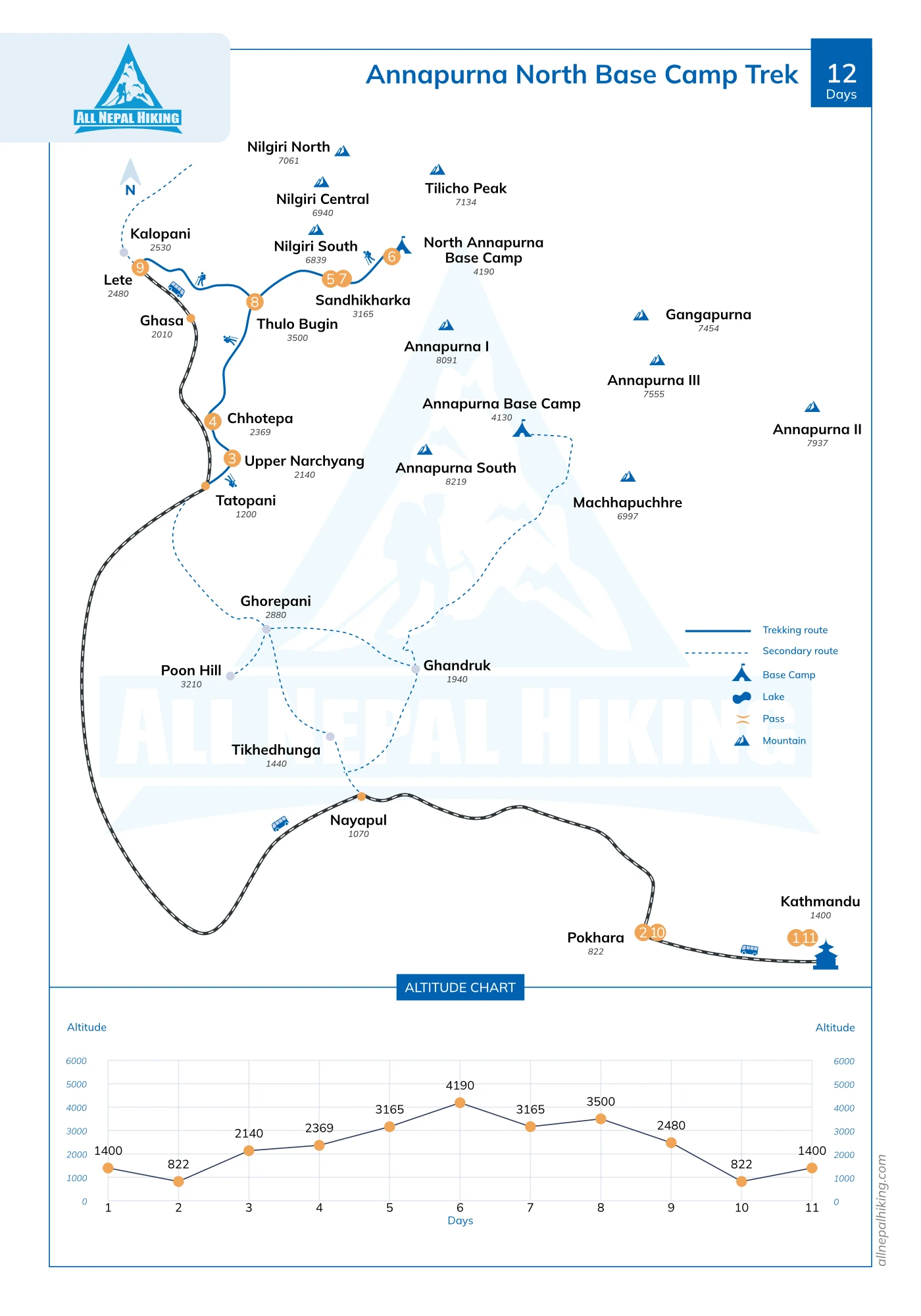The Annapurna North Base Camp Trek is a rare and rewarding adventure that leads trekkers into the raw, unspoiled wilderness of the less-explored northern face of the iconic Annapurna I. Designed for those who crave solitude, history, and natural grandeur, this trek follows the footsteps of the pioneering French expedition led by Maurice Herzog and Louis Lachenal, the first peoples to expedition an 8000 meter peak of Annapurna I (8091m) on June 3, 1950.
An Untouched Route with Historic Echoes
Long before modern mountaineering captured global imagination, Herzog’s team braved unknown terrain and deadly conditions without supplemental oxygen to reach the top of Annapurna I. Their daring descent through blizzards, avalanches, and freezing storms marked a defining chapter in Himalayan exploration. Today, trekkers can trace parts of that legendary journey on the Maurice Herzog Trail, culminating at the Annapurna North Base Camp, also known as the French North Face Route.
Unlike the crowded southern routes that are taken during the Annapurna Circuit trek or the Annapurna Base Camp Trek, the northern approach remains wild, remote, and virtually untouched. Few have ventured here, making this trail ideal for those seeking a serene trekking experience far from commercial circuits.
Trek Itinerary Overview
The Adventure begins from Pokhara, with a scenic drive to Tatopani, a natural hot spring. From there, you ascend through Narchyang Village, Chhotema, Kalokhola, and Phulbari, navigating toward the remote pastures near base camp. By day 9, you reach the North Base Camp of Annapurna I. The return journey, which takes about 3-4 days, can loop through Lete in Mustang, offering a unique conclusion to your adventure.
What Makes the Annapurna North Base Camp Trek Unique?
Unlike the popular Annapurna Circuit or Annapurna Base Camp (South), the north side of Annapurna I is wild, less inhabited, and still mostly untouched by mass tourism. The trail leads into the Myagdi Valley, winding through thick forests, glacial rivers, traditional Magar settlements, and finally to the foot of Annapurna's north face, which towers like a fortress of ice and stone.
This is not just a trek, it’s a historical pilgrimage. In 1950, Maurice Herzog and Louis Lachenal of the French team blazed this very route. Today, only a handful of trekkers reach this isolated base camp each year, making it a hidden gem for true adventure lovers.
Why Choose the Annapurna North Face Trek?
If you're drawn to routes less travelled, crave real adventure, and seek to connect with the spirit of early Himalayan exploration, this trek is for you. With no crowds, uninterrupted landscapes, and a deep sense of mountain heritage, the Annapurna North Base Camp Trek offers an experience that's as enriching as it is unforgettable.
While the southern base camp is stunning, it’s also crowded, commercialized, and saturated with trekkers and guesthouses. On the other hand, the Annapurna North Base Camp Trek offers:
Real solitude: You may not see another trekker for days.
Tented camping under the stars: Sleep in total wilderness, surrounded by glaciers.
Unfiltered nature: Spot wildlife like musk deer, Himalayan tahr, langurs, and even snow leopards.
Cultural authenticity: Visit the untouched Magar villages, where life remains traditional and deeply rooted in the land.
For trekkers wanting a deeper connection with the Himalayas, this is the path less taken.
Who Is This Trek Ideal For?
This trek is perfect for:
Experienced trekkers seeking remote Himalayan routes.
History buffs want to follow the original Annapurna summit trail.
Nature lovers who crave wildlife, solitude, and wilderness.
Adventure seekers who are physically fit and can handle basic camping conditions.
This trek is not ideal for those looking for luxury lodges or easy access to food and Wi-Fi. It’s a raw, immersive journey that demands both respect and resilience.
How Difficult Is the Trek?
This is a moderate to strenuous trek. It doesn’t reach extreme altitudes like Everest or Kanchenjunga, but the remoteness, lack of facilities, and steep forested trails demand physical and mental stamina.
Daily trekking hours range from 5 to 7 hours, and accommodation will mostly be in tents, not teahouses. You’ll also need to carry enough food and supplies due to the lack of shops after the first couple of days.
A certified local guide, proper camping support, and a reliable itinerary with acclimatization days are essential.



 based on 11 reviews
based on 11 reviews
